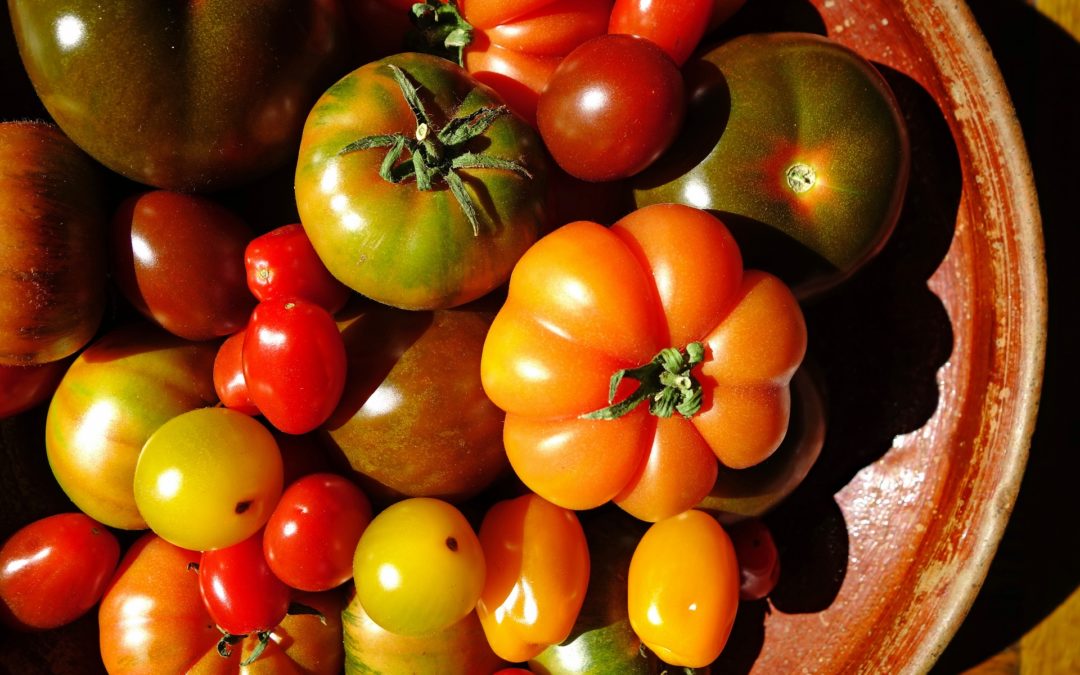Solanum lycopersicum: one of the most used product in the Italian and global cuisine
The tomatoes are a typical annual plant. The red fruits of this plant are widely used in kitchens all over the world. The term tomato is attributed to the botanist Pietro Andrea Mattioli who first documented the vegetable in Italy. The name derives from ‘pomo d’oro‘, because of its characteristic golden yellow colour before the last stage of ripening. This plant is native from the regions of Central America, South America and the southern part of North America. The plant of tomatoes arrived in Europe in the 1540s and in Italy in 1548. Tomatoes are typically used in the kitchen for a variety of recipes, from simple and classic salads and sauces. There are more than 15,000 species of tomato plants of different shapes and colours in the world. There are elongated, round, clustered, cherry-shaped, red, yellow, green, orange, and many others. In 2018, Italy was ranked 7th in the world for growing tomatoes. In that year alone, 5798103 tonnes of tomatoes were produced.
Visualizza questo post su Instagram
A lot of tomato variets in Italy
In the Italian peninsula, there are approximately 15 different types of tomato plants grown throughout the country:
- Pomodoro Pachino: this is a product with a protected geographical indication (IGP) grown mainly in the Sicilian provinces of Ragusa and Siracusa.
- Pomodoro fragola: this is a variant of Pomodoro Pachino, it has a strawberry shape, and a low acidity.
- Pomodoro datterino: is a type of tomato with a small, oval shape, which turns out to be a hybrid of Asian origin.
- Pomodoro vallivo
- Pomodoro Camone: is a round, smooth, medium-small tomato, its distinctive dark red colour with deep green streaks being its first distinguishing feature. It is grown mainly in the regions of Sardinia and Sicily.
- Pomodoro di Belmonte: it is original from Cosenza province, in Calabria region. Its fruits are a soft pink colour when ripe.
- Pomodoro di San Marzano: The San Marzano tomato (DOP) is a variety of tomato recognised as an Italian fruit and vegetable product with a protected designation of origin. It is original from Campania region, and it has an elongated shape.
- Pomodoro Regina: it is original from Apulia region, the name ‘Regina’ derives from the particular shape of the crown-shaped petiole.
- Pomodoro Cuore di bue: this type of tomato is perfect for salads. It has a large, irregular shape. Its production is divided among many Italian regions including Piedmont, Liguria, Tuscany, Abruzzo, and many others.
- Pomodoro costoluto catanese: Originally from the province of Catania, this type of tomato has a round, flattened shape and a very inviting red colour.
- Pomodoro costoluto fiorentino: very similar to the Catanese ribbed tomato, but is grown in areas of the Tuscany region.
- Pomodoro blu: small round blue tomatoes, usually they can also be black or purple
- Pomodoro di Corbara: Originally from the province of Salerno, this type of tomato has a small shape similar to scamorza cheese.
- Pomodoro grinzoso sanminiatese: is a tomato for sauce and seasoning, which is also used in salads before reaching full maturity, originating in the area of San Miniato in Tuscany.
- Pomodoro di Manduria: grown mainly in the Taranto area in Apulia.
- Pomodoro del piennolo del Vesuvio: is a variety of tomato grown exclusively on the volcanic slopes of Vesuvius. Already recognised as a traditional food product by the Campania region, it became a PDO in 2009.
Visualizza questo post su Instagram
Cover photo by Stephanie Albert from Pixabay

